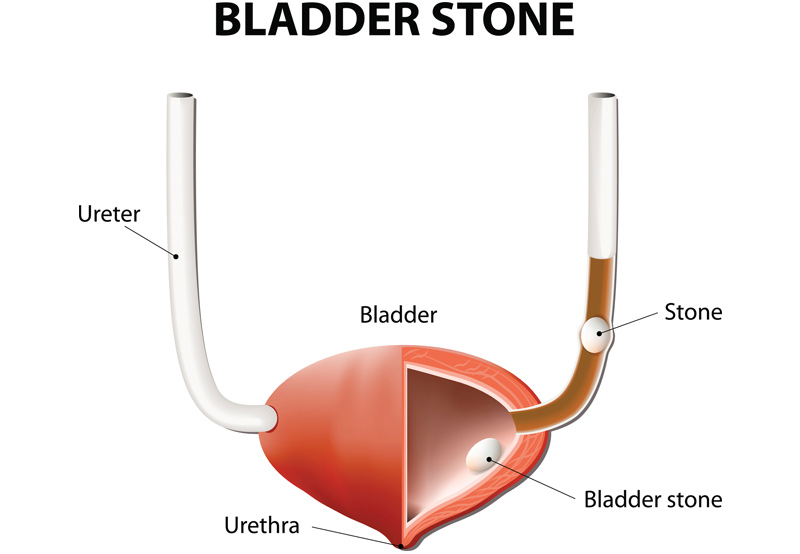

Bladder stones are solid masses found in the urinary bladder. The stones may be calcified or made of non-calcified material.
Bladder stones may be made of calcium oxalate, ammonium urate, cystine, calcium phosphate, and calcium-ammonium-magnesium phosphate.
Symptoms of Bladder Stones
Bladder stones typically don’t cause any specific symptoms. Patients may not have any symptoms at all. Bladder stones may be identified when evaluating a patient for other conditions, such as weak stream, suprapubic pain, terminal hematuria, dysuria, and other bladder emptying problems.

What Causes Bladder Stones?
Benign prostatic hyperplasia (BPH) and neurogenic bladder disorder are the primary cause of bladder stones. Most of these stones are formed in the bladder, while others may come from the kidneys as a stone or a sloughed papilla.
Foley catheters are another cause of bladder stones. One study found that 36% of patients with spinal cord injuries developed bladder stones over an eight-year period of follow-up. Improving urologic care for these patients helped reduce the rate down to 10%.
Who is at Risk of Developing Bladder Stones?
The risk of bladder stones seems to be decreasing due to the increased use of BPH medications around the world.
The risk of bladder stones is higher among men who have a history of nephrolithiasis, lower urinary pH, gout, and lower urinary magnesium levels. Another risk factor is urinary tract infections with a significant intravesical prostatic extension.
In children, boys are more likely to develop bladder stones than girls.
Diagnosing Bladder Stones
Patients may need to undergo a urinalysis to identify the presence of blood, nitrates, or leukocytes. The test may show a low urinary pH and a urinary tract infection (UTI).
An x-ray may be done to identify stones in the bladder, but the test may not be effective for adult men if the stone has not been calcified. A CT scan or a bladder ultrasound may be more effective for imaging bladder stones. A cystoscopy may also be done to identify bladder stones.
Treatment Options for Bladder Stones
Oral alkalinizing agents may be administered to dissolve bladder stones made of uric acid. Potassium citrate, which can be supplemented with sodium bicarbonate, may be an effective treatment. Patients will typically need 60mEq per day of potassium citrate. Their serum potassium levels and urinary pH levels will need to be tested periodically to maintain the optimal pH level necessary to dissolve the bladder stones.
A metabolic evaluation may be necessary for patients with a history of nephrolithiasis, as well as a 24-hour urine test for kidney stone production risk factors and directed prophylactic therapy.
Patients with calcium phosphate stones may be treated with periodic bladder instillations of ¼% acetic acid solution. This treatment can also be used in patients whose urinary drainage tubes tend to become clogged with debris.
Surgical options include endoscopic surgery, cystolitholapaxy, disruptive or ablative therapy, extracorporeal shockwave lithotripsy, percutaneous suprapubic cystolitholapaxy, transurethral resection of the prostate (TURP), and open suprapubic surgery. The right treatment for a patient will depend on the size, type, and location of the bladder stones, as well as their medical history.

